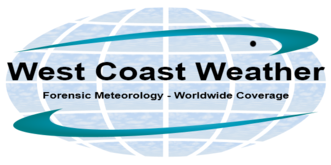APPROACH
The United States Geological Survey (USGS) makes available electromagnetic anomaly data from midlatitude research stations: Honolulu (HON) [21.307°N, 157.858°W], Kakioka (KAK) [36.242°N, 140.194°E], Alibag (ABG) [18.655°N, 72.867°E], Hermanus (HER) [34.409°S, 19.250°E] and San Juan (SJG) [18.466°N, 66.106°W]. San Juan, Puerto Rico is by far the closest to the continental US, with Honolulu being the next best data source.
Solar electromagnetic and geomagnetic anomalies can affect the atmosphere through both direct radiative transfer and chemically via radiative transfer followed by displacement. The USGS data, however, is not air samplings from the research stations but rather latitude-weighted values. That means a prominent solar electromagnetic storm over Quebec, for example, will get averaged out by all the readings both north and south of the event and won’t seem nearly as significant if the bottom half of the planet is posting data high into the positives. An exceptionally low reading correlates to widespread very low readings rather than an isolated
event.
San Juan [18.466°N, 66.106°W] is by far the closest to Tornado Alley, yielding the most regionally accurate measurement. Tornado Alley – which has a rough coordinate matrix of Montgomery, AL [32.379°N, 86.308°W], Akron, OH [41.081°N, 81.519°W], Pierre, SD [44.367°N, 100.354°W] and Abilene, TX [32.449°N, 99.733°W] – is where almost all F4s and F5s in the US have touched down, although all in the timeframe will be included. From San Juan, those coordinates yield a distance matrix: [13.92°, 20.20°], [22.62°, 15.41°], [25.90°, 34.26°], [13.98°, 33.63°]. Honolulu is much farther away but is second closest, so it will also be observed, as well as the planetary average.
